Art for Music Lovers: Your Expanded Guide to Visual Sound & Creative Harmony
Explore the deep, personal connection between art and music in this expanded guide. Discover historical links, synesthesia, how artists translate sound visually, decorating tips by genre, and even how music influences creating art. Find your visual soundtrack.
The Ultimate Guide: Art for Music Lovers - Connecting Sight and Sound
You know that feeling, right? You put on your favorite album, maybe something mellow and atmospheric, or perhaps something loud and energetic, and suddenly the world looks… different. Colors seem brighter, shapes feel more dynamic, or maybe the quiet stillness of a painting suddenly resonates with a hidden rhythm. Or perhaps it’s the other way around – you see a piece of art, maybe a swirling abstract canvas or a stark photograph, and you can almost hear the music it evokes.
It's not just you. The connection between art and music is profound, ancient, and incredibly personal. For some, it's a conscious exploration; for others, it's a subtle background hum that enhances both experiences. I find myself constantly drawn to this intersection – sometimes putting on specific music while painting, hoping some of that energy transfers, other times finding that a finished piece reminds me intensely of a certain song or mood. It's a bit magical, isn't it? Like discovering a secret language spoken by both sight and sound.
This guide is for all of you music lovers who also feel a pull towards the visual arts (or vice versa!). We'll delve into why these two forms complement each other so beautifully, explore historical connections, get practical with decorating tips, and hopefully, inspire you to find – or even create – art that truly sings to you.
Why Do Art and Music Vibe So Well Together?
It seems obvious they connect, but why? It's not just about subject matter, like paintings of musicians. The link runs much deeper, touching upon the fundamental ways we perceive and process the world. It's like our brains are wired for this cross-sensory party, even if we don't always notice the invitation.
- Shared Language of Emotion: Both art and music are masters of evoking feeling without words. A minor key melody can bring a tear, just as a dark, turbulent abstract painting can evoke unease. Joy, sorrow, peace, chaos – these universal emotions find powerful expression in both realms. I remember looking at a particularly intense abstract piece once, and it felt exactly like the build-up in a certain post-rock track – that same sense of controlled tension about to burst.
- Rhythm and Flow: Music has rhythm, tempo, and dynamics. Visual art has composition (how elements are arranged), line, movement, and visual weight. Think of the energetic brushstrokes in a Van Gogh painting – doesn't it feel rhythmic? Or the balanced calm of a minimalist sculpture – like a sustained, peaceful chord. The principles might have different names, but the underlying sense of structure and flow is shared. You can learn more about these foundational ideas in our guide to the Elements of Art.
- Harmony and Contrast: Musicians play with harmony (notes fitting pleasingly together) and dissonance (clashing notes creating tension). Artists use color harmony, complementary colors for contrast, and varying textures to create similar effects. A harmonious color palette can feel like a beautiful chord progression, while sharp contrasts might mimic a startling musical shift. And just as music uses silence, visual art uses negative space – the quiet areas that give the main elements room to breathe and define the rhythm of the composition.
- Abstraction: Both music (especially instrumental) and much visual art operate in the realm of the abstract. They don't necessarily need to represent something "real" to be powerful. An abstract painting and a symphony can both take you on an emotional journey purely through color, shape, sound, and structure. Delving into the history of abstract art reveals many artists explicitly trying to capture musical sensations.
The Curious Case of Synesthesia
For some people, the connection is even more direct. Synesthesia is a neurological phenomenon where stimulating one sensory pathway leads to involuntary experiences in a second pathway. The most common form related to our topic is chromesthesia, where sounds evoke an experience of color.
Imagine hearing a trumpet blast and seeing a flash of bright yellow, or a low bass note feeling like deep velvet blue. Artists like Wassily Kandinsky are famously believed to have had synesthesia, and it profoundly influenced his work. He explicitly tried to create paintings that functioned like symphonies, using color and form to evoke specific sounds and emotions.
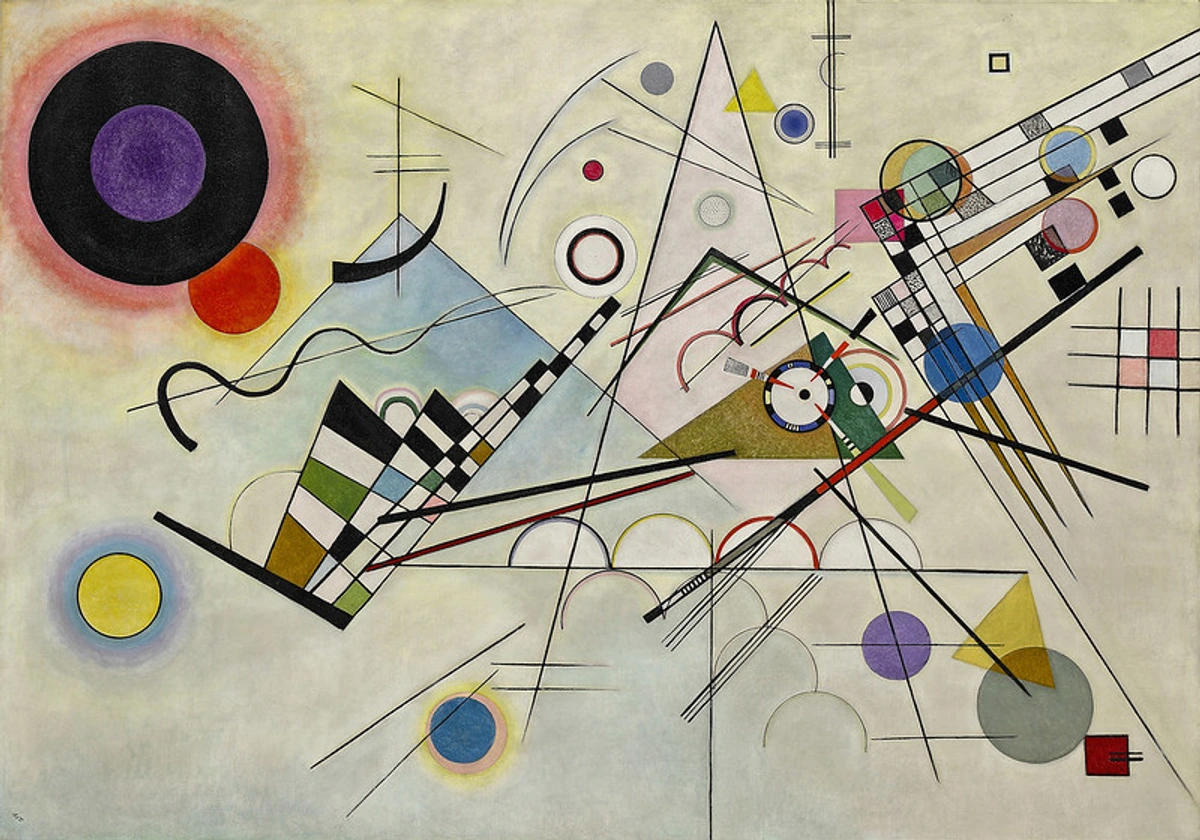
Even if you don't have clinical synesthesia (most of us don't!), we often use cross-sensory language. We talk about "loud colors," "sharp sounds," "smooth melodies," or "dark music." This isn't just flowery language; it shows a natural tendency in our brains to find parallels and connections between different sensory experiences, even if it's not the full, involuntary synesthetic experience. It's like our everyday, low-level version of seeing sound.
A Historical Duet: Art and Music Through Time
The partnership between art and music isn't new. It's been a long, evolving dance, with artists and musicians constantly influencing and reflecting each other across the centuries.
- Antiquity: Music and performance were often intertwined with visual spectacles, masks, and decorated spaces. Think of ancient rituals where visual art, music, and movement were all part of a single, immersive experience.
- Medieval Period: Illuminated manuscripts often depicted musicians, and the grand architecture of cathedrals (like the soaring lines of Sainte-Chapelle, perhaps?) aimed for an awe-inspiring, heavenly harmony, much like sacred choral music. The visual grandeur was designed to elevate the spiritual experience, just as the music did.
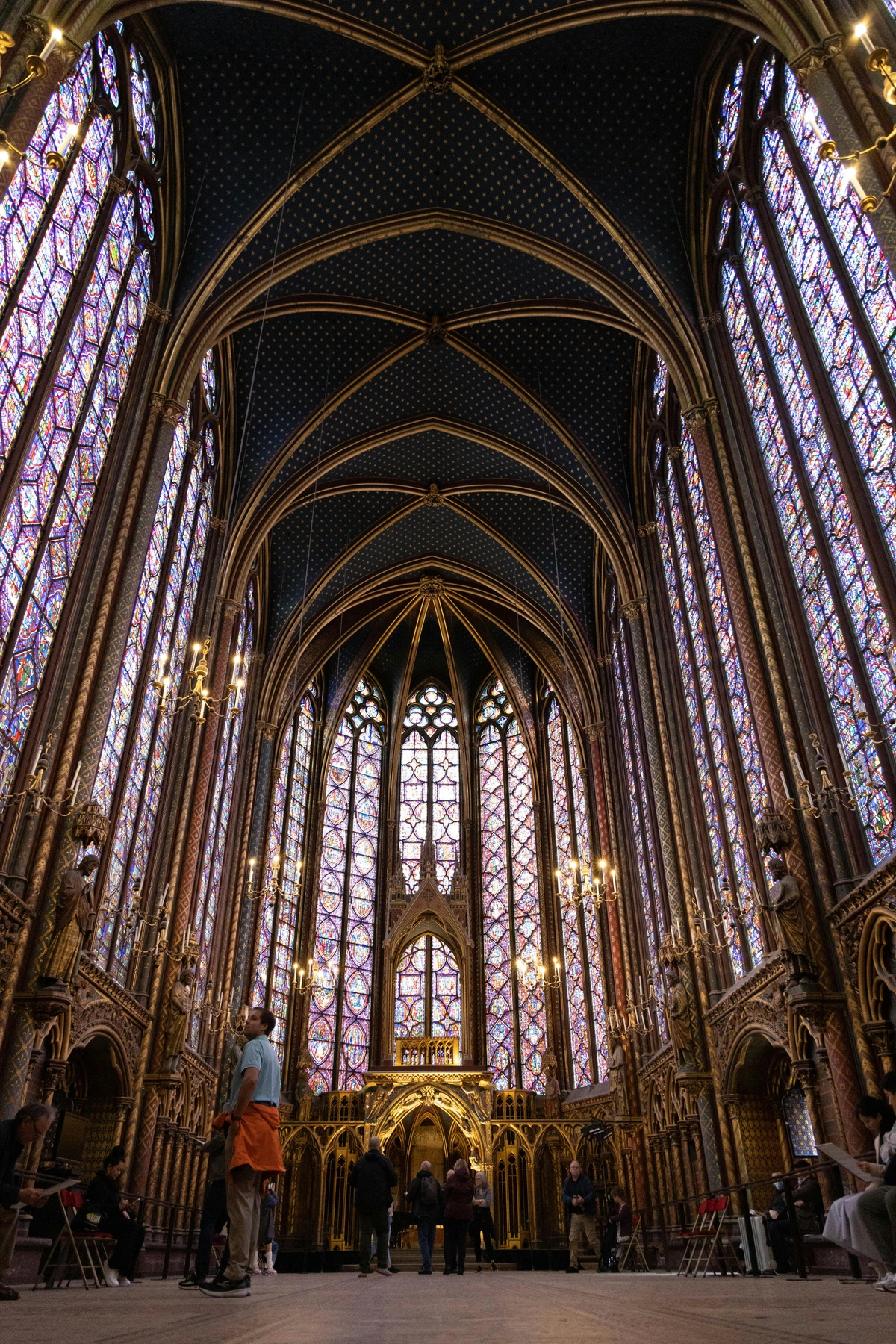
- Renaissance & Baroque: Opera combined music, drama, and elaborate set/costume design. Paintings often depicted musical scenes or allegories of music. Think of the dramatic intensity of Baroque art mirroring the emotional power and complexity of its music, like a visual crescendo.
- Romanticism: Artists and composers explored intense emotions, nature, and folklore, often drawing inspiration from each other. The sweeping landscapes in painting found echoes in the expansive symphonies of the era.
- Modernism: This is where the explicit attempt to translate music into visual art truly took flight. Artists weren't just depicting music; they were trying to be musical with their paint and canvas.
- Wassily Kandinsky: A pioneer of abstract art, he aimed for "visual music." He gave many works musical titles like "Impressions," "Improvisations," and "Compositions," believing that colors and forms could vibrate with spiritual resonance, much like musical notes. His goal was to create a total sensory experience.
- Piet Mondrian: Inspired by the rhythms of jazz and boogie-woogie, he sought visual rhythm and harmony in his geometric grids. His famous "Broadway Boogie Woogie" is a direct visual translation of the syncopated energy of the New York jazz scene.
- Paul Klee: A talented violinist himself, his work is filled with musical analogies and structures. He explored concepts like polyphony and rhythm in his lines and colors, often creating works that feel like visual scores.
- Movements like Fauvism (with its wild, expressive colors) and Cubism (fragmenting reality) echoed the revolutionary shifts happening in musical composition at the time. You can explore more key figures in our Guide to Modern Artists.
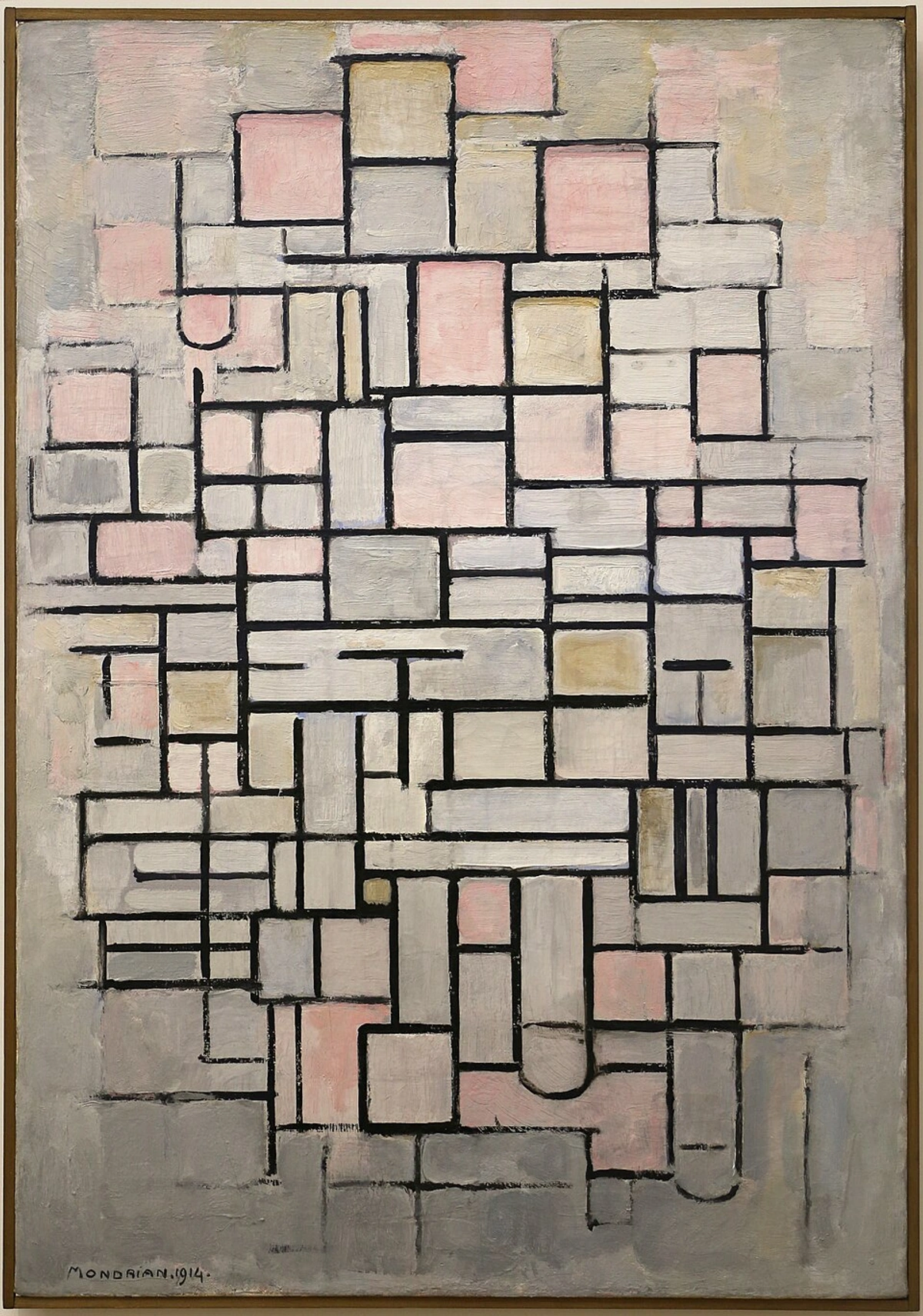
- Mid-Century & Beyond: The rise of album art created a whole new field, blurring lines between fine art, commercial art, and music culture. Artists like Andy Warhol (think The Velvet Underground & Nico) were central to this. Abstract Expressionists like Mark Rothko created immersive color fields that many compare to profound musical experiences, aiming for a deep emotional resonance. In contemporary art, we see artists creating visual scores, experimenting with sound installations, and using digital tools for music visualization, further merging the two forms.
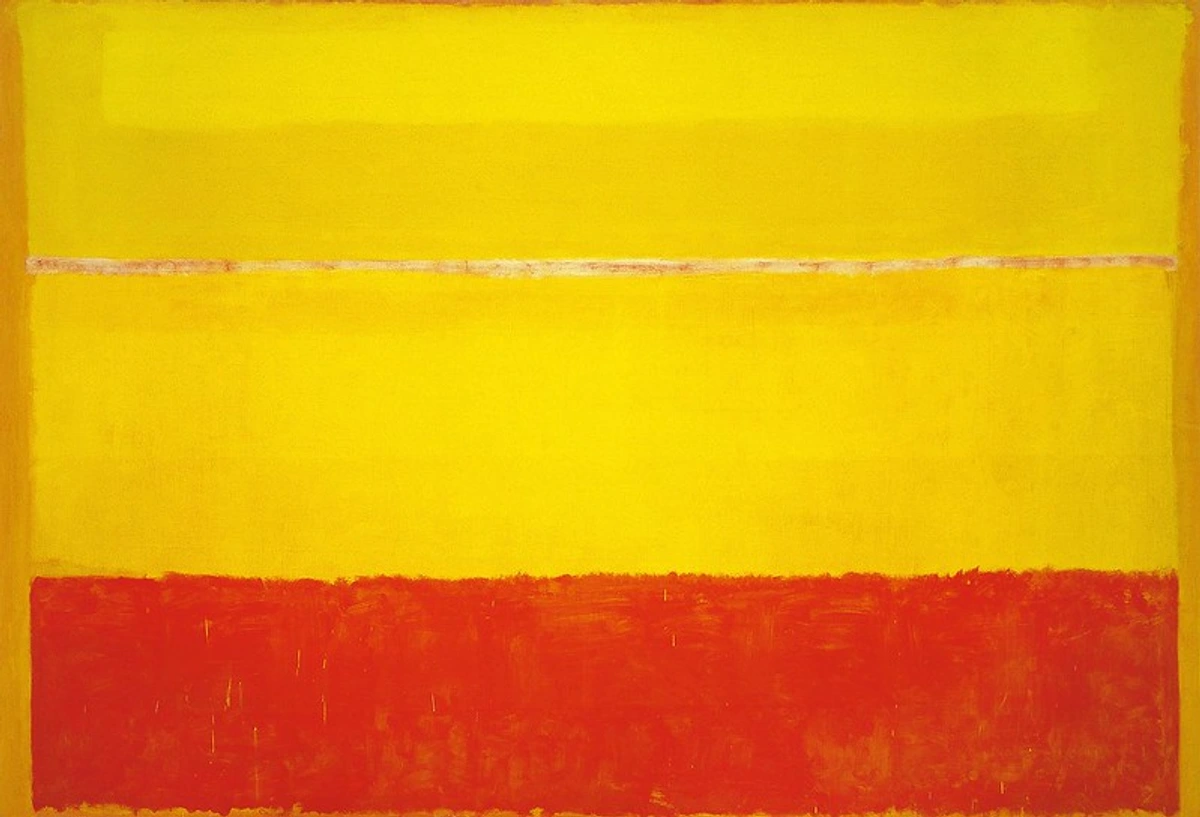
Translating Sound into Sight: How Artists Do It
So, how does an artist actually take something as ephemeral as sound and give it visual form? It's a fascinating challenge, and artists approach it in diverse ways:
- Direct Representation: Painting musicians, instruments, concerts, or dancers. This is the most literal connection, capturing the act of making or experiencing music.
- Abstract Interpretation: Using color, line, shape, and texture to convey the feeling, rhythm, or structure of music without depicting recognizable objects. This is where much of the exciting modern and contemporary work happens. It's about capturing the essence of the music, not just its appearance. For me, this often involves letting the music dictate the energy of my brushstrokes or the palette I choose – a chaotic punk track might lead to sharp, clashing colors and jagged lines, while a flowing classical piece could inspire smooth curves and harmonious blends.
- Symbolism: Using symbols or visual metaphors to represent musical ideas, composers, or songs. Understanding these requires a bit more digging, sometimes explained in our guide on how to understand symbolism.
- Album Art: A unique category combining visual appeal with branding, mood-setting, and sometimes narrative elements related to the music within. It's a visual handshake for the sound inside.
Album Covers: The People's Art Gallery?
For many music lovers, album art is their first and most consistent encounter with visual art explicitly linked to music. From the iconic designs of Hipgnosis (Pink Floyd) to the photography of Annie Leibovitz, the bold graphics of Peter Saville (Joy Division, New Order), or the fine art crossovers (Warhol, Richard Prince, Damien Hirst), album covers are a vital part of the musical experience.
They can:
- Set the mood before you even hear a note.
- Offer clues about the music's themes or genre.
- Become iconic images inseparable from the sound.
- Introduce listeners to different art styles.
Think about displaying vinyl records – it's literally putting art on your walls! And yes, to answer a common question, album covers are absolutely considered 'real' art by many. They function as visual art within a specific commercial context, but their artistic merit, cultural impact, and collectibility are undeniable. The debate often comes down to definitions explored in "What is Art?".
Decorating Your Space: A Symphony for the Eyes
Okay, let's get practical. How can you bring this art-music connection into your own home? You don't want your living room looking like a Hard Rock Cafe (unless you do, no judgment!). It's about finding pieces that resonate with your musical taste and enhance your environment. Think of your walls as the visual equivalent of your favorite playlist.
- Match the Mood: Think about the feeling of your favorite music. What colors, textures, or energy does it evoke? This is where the cross-sensory connection really comes into play.
- Calm & Ambient: Minimalist abstracts, serene landscapes, soft color palettes, perhaps photography. Think gentle washes of color or quiet compositions.
- Energetic & Upbeat: Bold colors, dynamic compositions, abstract expressionism, pop art. Look for pieces with visual 'movement' or vibrant palettes.
- Classical & Complex: Detailed works, traditional paintings, art with intricate patterns or structures. Maybe something with historical weight or layered detail.
- Jazz & Blues: Expressive abstracts, moody cityscapes, black and white photography, figurative work capturing soulful moments. Think improvisation in brushstrokes or the depth of monochrome.
- Rock & Punk: Raw energy, street art influences, graphic styles, photography capturing rebellion or intensity. Look for bold lines, high contrast, or a slightly chaotic feel.
- Electronic/Techno: Geometric abstraction, digital art, vibrant, sometimes repetitive patterns, light installations. Art that feels precise, futuristic, or pulsating.
- Folk/Acoustic: Narrative art, landscapes, portraiture, art with natural textures or earthy palettes. Pieces that tell a story or feel grounded.
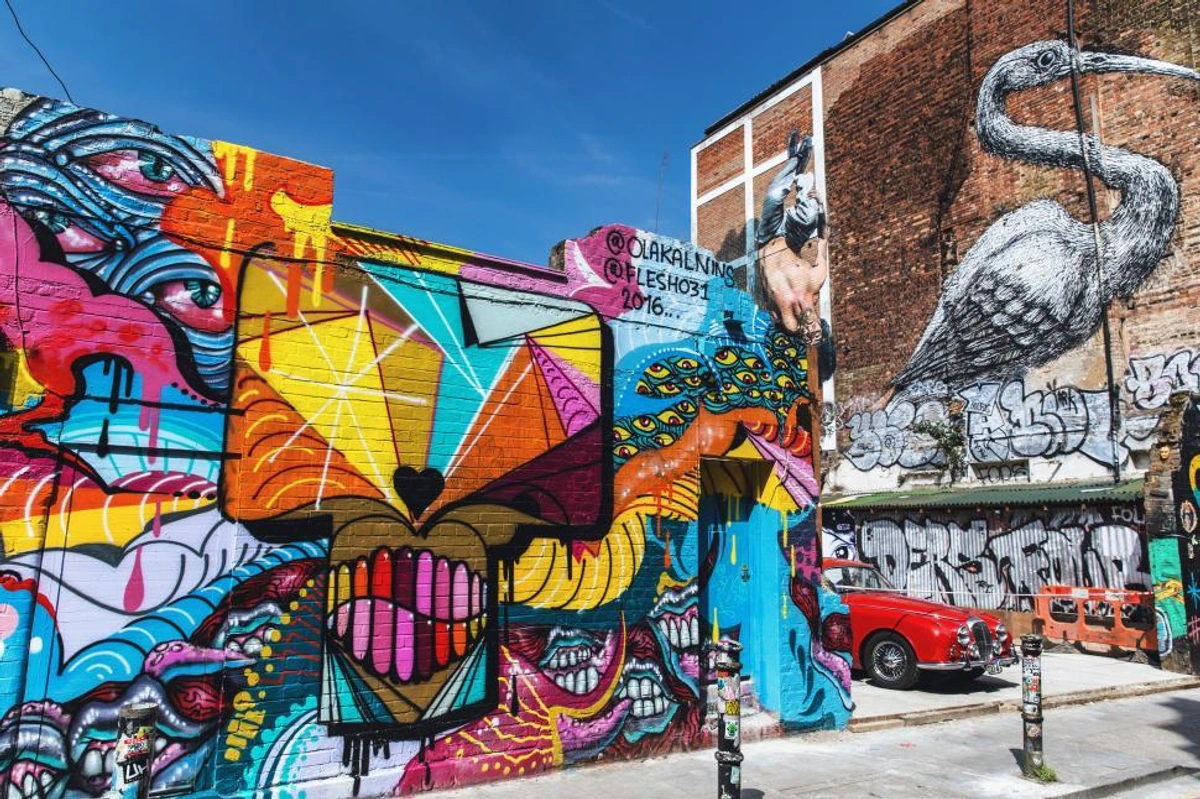
- Direct References (Use Sparingly): A framed vintage concert poster, a subtle painting of a guitar, or a piece of abstract art titled after a song can work well. Too much literalism can feel cliché, like wearing the band t-shirt to the band's own concert.
- Abstract is Your Friend: Abstract art is fantastic for music lovers because it leaves room for interpretation. A piece with vibrant, swirling colors might feel like a complex jazz solo one day and an electronic track the next. It connects on an emotional and structural level rather than a literal one. Explore why abstract art is compelling if you're curious.
- Think About Display:
- Create a gallery wall combining album covers, art prints, and photos. Check our guide on how to decorate a wall.
- Place a significant piece near your sound system or listening chair – a visual anchor for your auditory escape.
- Use art to define zones – maybe calming art in a reading nook where you listen to quiet music, and something more dynamic in the main living area. We have tips for decorating specific rooms like the living room or even your office.
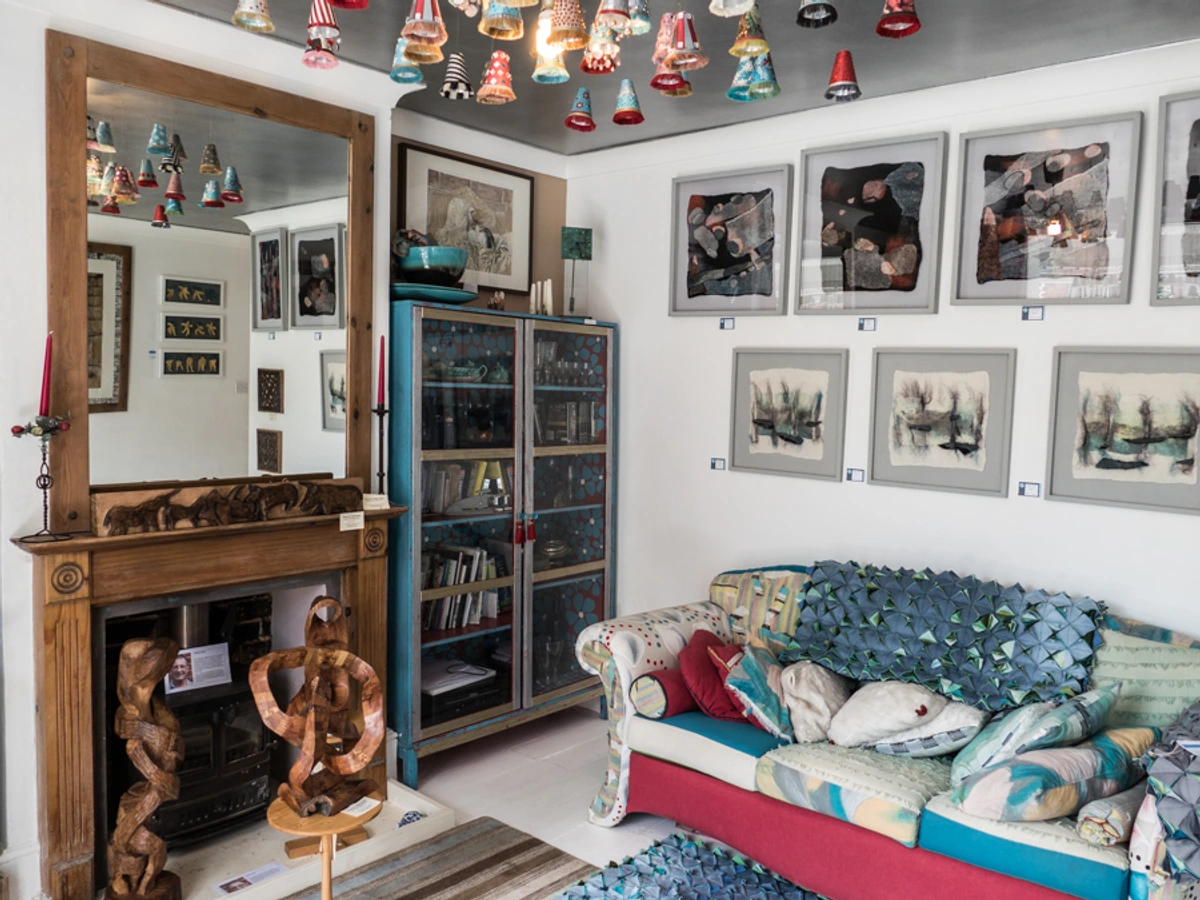
- Where to Find Art:
- Online Galleries & Marketplaces: Offer vast selections. Check guides on buying art online and where to buy art.
- Artist Websites: Directly support artists and find unique pieces (you can explore contemporary art for sale here, for instance). This is where you might find an artist whose personal connection to music mirrors your own.
- Art Fairs: Great for discovering new artists, but can be overwhelming. See tips for visiting art fairs.
- Prints vs. Paintings: Prints can be more affordable ways to start collecting. Read about the differences in our prints vs. paintings guide.
- Local Artists: Explore galleries in your area or nearby cities known for art, like perhaps 's-Hertogenbosch if you happen to be in the Netherlands! Buying local can often lead to discovering artists with unique perspectives.
Creating Art to Music: My Own Experience
As an artist, the relationship between music and the act of creation is something I live every day. It's not just about finding art that looks like music; it's about letting the music flow through the creative process itself. It's a conversation between my ears, my hands, and the canvas.
Choosing the right soundtrack for a studio session is almost as important as choosing my paints. Different music unlocks different energies and moods. Sometimes I need the driving rhythm of electronic music to fuel a fast-paced, energetic piece. Other times, the layered textures of ambient soundscapes help me build depth and atmosphere in an abstract work. Classical music can bring a sense of structure and harmony, while jazz improvisation encourages spontaneity and unexpected turns.
I've found that the music I listen to directly influences my brushstrokes, my color choices, and even the overall composition. A piece created while listening to something intense and dissonant will inevitably feel different from one made during a session soundtracked by calm, melodic tunes. It's like the music becomes an invisible collaborator, guiding my hand in subtle ways. I remember working on a large abstract piece once, struggling to find its rhythm, until I put on a specific piece of minimalist music. Suddenly, the repetitive patterns and subtle shifts in the music clicked something in my brain, and the visual rhythm of the painting just appeared.
If you're an artist, or even just curious about making things, I highly encourage you to experiment with creating art while deeply listening to music. Don't overthink it. Just let the sound move you and see what happens on the page or canvas. It's a fantastic way to explore that personal, internal connection between sight and sound.

Finding Your Visual Soundtrack
Choosing art is personal, just like choosing music. Don't worry about "rules." Trust your gut. What makes your ears happy? What makes your eyes happy? Often, they're looking for similar things.
- Listen with Your Eyes: Browse art online or in galleries. What pieces make you feel something similar to your favorite music? Pay attention to the energy, the colors, the lines. Does it feel like a soaring chorus or a quiet bridge?
- Consider Your Space: Think about the room's function and existing decor. Need help? Our interior decorating guide might spark ideas. The art should enhance the space, not fight with it.
- Start Small: You don't need a masterpiece. A well-chosen print or a small original can make a big impact. Starting an art collection on a budget is entirely possible.
- Learn About Artists: Sometimes knowing an artist's story or inspiration (maybe found on their personal timeline or biography) adds another layer of connection. Did they create work inspired by music? That's a direct link! Check our guide on researching artists.
Questions That Often Strike a Chord
Let's tackle a few common questions that pop up when we talk about this fascinating connection.
Q: What is art inspired by music called? A: There isn't one single, universally accepted term. It can fall under various movements like Abstract Expressionism, Synchromism, or simply be described as "music-inspired art" or "visual music." Sometimes artists give works musical titles like "Composition," "Improvisation," or "Fugue" to explicitly signal the connection.
Q: Can you really 'see' music in paintings? A: For people with synesthesia, yes, in a literal, involuntary sense. For most others, it's more metaphorical and interpretive. We perceive shared qualities like rhythm, emotion, harmony, and structure in both art forms, allowing us to "feel" or interpret a musical quality in a visual work. It's about finding those parallels in the language of the senses.
Q: How do I find art that matches my specific music taste (e.g., Heavy Metal)? A: Think about the qualities of the music. Heavy Metal might be loud, energetic, dark, complex, maybe even aggressive or fantastical. Look for art with those visual qualities: bold, perhaps chaotic compositions; dark palettes or high contrast; intricate details; maybe surreal or fantastical imagery. Don't look for literal guitars unless that's what you want – focus on the feeling and energy the music gives you and seek art that visually embodies that.
Q: Is it okay to just buy art because it looks cool with my speakers? A: Honestly? Yes! While deeper connections are rewarding, art should also bring you joy and complement your space. If a piece looks great and makes you happy, that's a perfectly valid reason to choose it. Our guide on how to buy art encourages finding what you love. Sometimes the simplest connection is the best one.
Conclusion: The Ongoing Conversation
The dialogue between art and music is rich, dynamic, and deeply personal. It’s a conversation that unfolds in galleries, concert halls, studios, and perhaps most importantly, within ourselves as we experience the world. Whether you're consciously seeking visual echoes of your favorite melodies or simply find that certain images strike a chord, embracing this connection can profoundly enrich your appreciation of both art forms.
So, put on some music, look around you – maybe browse some art online – and listen with your eyes. What harmonies do you discover? What visual rhythms resonate with your favorite tracks? Take a moment to just feel the connection. You might be surprised by the new dimensions it adds to both your listening and your looking.
![]()




